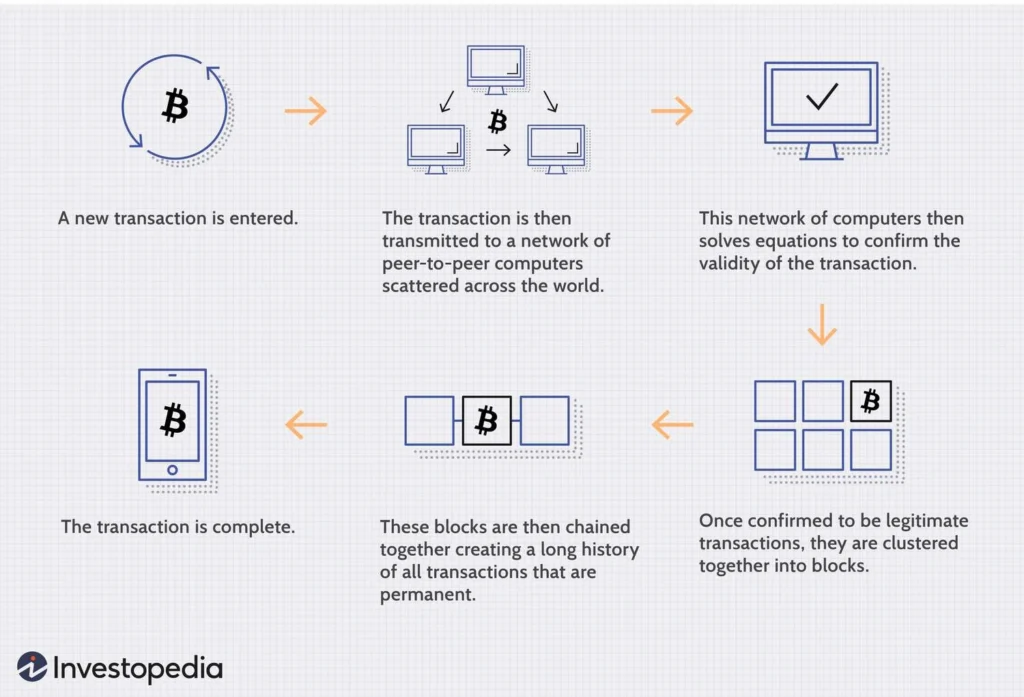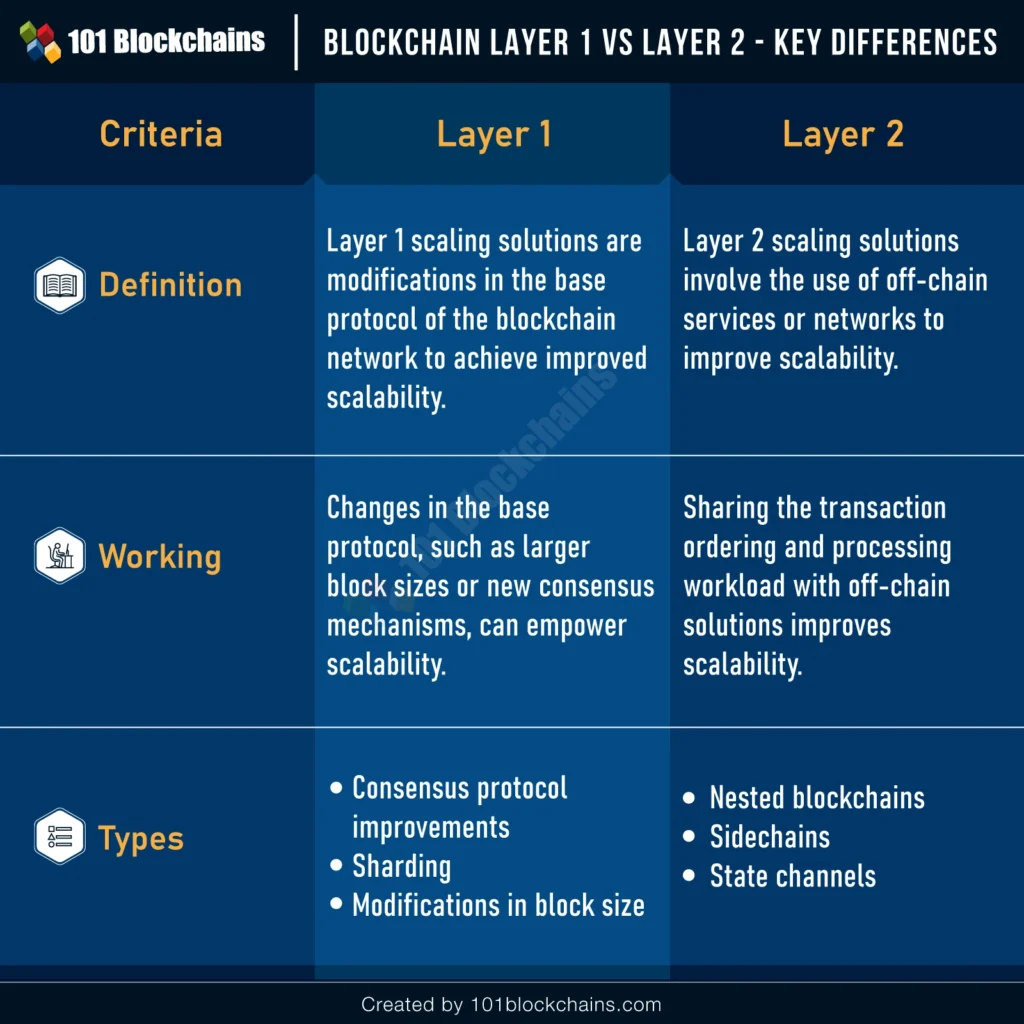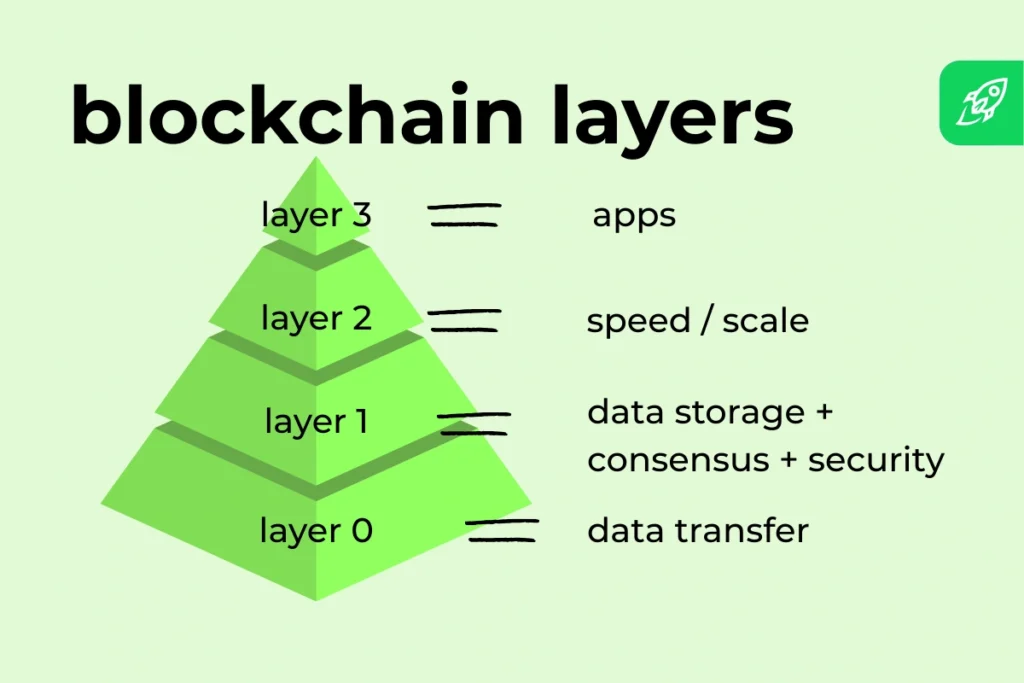Layer 1 vs Layer 2 Blockchains: A Beginner’s Guide to How Blockchain Layers Work Together
In blockchain development, understanding layer 1 vs layer 2 blockchain is essential. These two layers play distinct but complementary roles in making decentralized technologies scalable, secure, and practical. As the crypto space evolves, both beginners and developers are expected to understand the purpose and mechanics of each layer—and how they tackle real-world challenges in blockchain ecosystems.
This guide walks you through the basics of blockchain layers, with a focus on Layer 1 and Layer 2. We’ll examine what they are, how they differ, why they matter, and what real-world examples exist today.
What Is a Blockchain?

Credit from Investopedia
At its core, a blockchain is a digital ledger—an incorruptible database shared across a network of computers. Each transaction added to the chain is timestamped and validated by consensus mechanisms such as Proof of Work (PoW) or Proof of Stake (PoS).
What makes blockchain revolutionary is its decentralization—no single authority controls it. Instead, trust is distributed, and tampering is virtually impossible. But as this technology scaled, issues around speed and cost started to emerge. That’s where blockchain layers come in.
Blockchain Layers: The Bigger Picture
Just like modern software stacks, blockchain systems are also layered for modularity, performance, and scalability. Each layer has a designated purpose:
- Layer 0: Provides the infrastructure for communication between different blockchains.
- Layer 1: The foundational chain where core transactions and consensus happen.
- Layer 2: Built atop Layer 1 to improve speed and reduce costs.
- Layer 3: The interface layer for user-facing applications (wallets, DeFi apps, games).
This guide focuses on Layer 1 vs Layer 2 blockchain, since these two are directly involved in the transaction flow and performance.
Layer 1 Blockchain Explained

Credit from Debut Infotech
Layer 1 refers to the main blockchain architecture. It is where transactions are verified, blocks are added to the chain, and consensus rules are enforced. This is the foundation of any blockchain network.
Key Characteristics of Layer 1:
- Directly manages the blockchain ledger.
- Runs consensus mechanisms (PoW, PoS).
- Executes smart contracts and decentralised applications.
- Maintains decentralization and network security.
Examples of Layer 1 Blockchains:
- Bitcoin – Primarily used for peer-to-peer transfers.
- Ethereum – Supports smart contracts and dApps.
- Solana – Focuses on high throughput.
- Cardano – Emphasizes peer-reviewed development and energy efficiency.
Challenges Faced by Layer 1:
As blockchain adoption grew, Layer 1 networks began to suffer from network congestion, high transaction fees, and slow processing times. For example, Ethereum gas fees regularly spike during periods of high demand.
These problems are rooted in the blockchain trilemma: achieving decentralization, scalability, and security simultaneously. Layer 1 excels in decentralization and security but struggles with scalability.
Layer 2 Blockchain Explained
Layer 2 refers to technologies built on top of Layer 1 that are designed to handle more transactions, faster and cheaper. These are off-chain scaling solutions that still rely on the base layer for final security and settlement.
How Layer 2 Works:
Layer 2 protocols bundle or process transactions off-chain, and then post a compressed record or proof back to Layer 1. This reduces the computational and storage load on the base chain.
Examples of Layer 2 Blockchains and Protocols:
- Lightning Network – Enables microtransactions on Bitcoin with near-instant speed.
- Optimism – A rollup for Ethereum that reduces gas fees.
- Arbitrum – Another Ethereum rollup known for fast throughput.
- zkSync – Utilizes zero-knowledge proofs to verify off-chain transactions with strong security.
Benefits of Layer 2:
- Increased scalability – Thousands of transactions per second.
- Reduced costs – Lower gas fees due to batching.
- Enhanced speed – Near-instant confirmation times.
Most importantly, Layer 2 improves blockchain speed and usability without compromising on the core security of Layer 1.
Layer 1 vs Layer 2 Blockchain: Why Both Layers Matter

Credit from 101 Blockchains
Layer 1 is the base layer—think of it like the foundation of a skyscraper. It must be robust, secure, and decentralized. But building directly on it can be expensive and slow.
Layer 2 is the fast-moving elevator—allowing users to scale the building efficiently without touching every floor.
Together, Layer 1 and Layer 2 solve the blockchain trilemma:
- Security: Guaranteed by the Layer 1 base chain.
- Scalability: Achieved by Layer 2 transaction batching and off-chain execution.
- Decentralization: Maintained through trustless protocols and open networks.
Real-World Applications and Use Cases

Credit from Changelly
Here’s how this layered approach plays out:
- Ethereum Layer 2: In 2024, Optimism and Arbitrum processed more daily transactions combined than Ethereum Layer 1. Projects like Uniswap, dYdX, and Synthetix now use Layer 2 to serve users at a fraction of the cost.
- Bitcoin’s Lightning Network: Enables real-time Bitcoin payments with negligible fees, suitable for remittances and retail use cases.
- Gaming and NFTs: Many NFT and blockchain gaming platforms (e.g., Immutable X) operate on Layer 2 to ensure low transaction friction.
Layer 0 and Layer 3: A Quick Look for Context
Although this article focuses on layer 1 vs layer 2 blockchain, it helps to briefly understand the layers above and below:
- Layer 0: Platforms like Polkadot and Cosmos connect multiple blockchains, enabling cross-chain communication and shared security.
- Layer 3: Where end-users interact through wallets (e.g., MetaMask), dApps (e.g., Uniswap), and games (e.g., Axie Infinity). Layer 3 relies on both Layer 1 and 2 to function efficiently.
Summary Table: Comparing Layer 1 and Layer 2
| Layer | Purpose | Key Characteristics | Examples |
|---|---|---|---|
| Layer 1 | Base blockchain handling transactions | Secure, decentralized, slower | Bitcoin, Ethereum, Solana |
| Layer 2 | Scaling solutions to improve Layer 1 | Faster, cheaper, off-chain processing | Lightning Network, Optimism |
Looking Ahead: Future of Layer 1 and Layer 2 Blockchain
The future lies in combining robust Layer 1 chains with agile Layer 2 solutions. Ethereum’s upcoming upgrades and Layer 2 expansion (e.g., rollup-centric roadmap) highlight the direction the industry is taking—modularity and scalability without sacrificing decentralization.
Meanwhile, Layer 2 protocols are becoming increasingly sophisticated, integrating privacy features, interoperability, and cross-chain functionality. As 2025 unfolds, the best Layer 2 blockchains are likely to lead adoption across finance, gaming, and enterprise infrastructure.
Conclusion
Understanding the difference between layer 1 and layer 2 blockchain is crucial for anyone exploring the crypto space. Layer 1 establishes the secure foundation; Layer 2 brings scale and efficiency. Together, they reflect the engineering brilliance behind blockchain’s evolution—tackling real challenges while pushing forward the boundaries of decentralization.
Whether you’re a crypto investor, developer, or simply curious, grasping these layers opens the door to deeper blockchain literacy—and smarter decisions in a fast-changing space.




